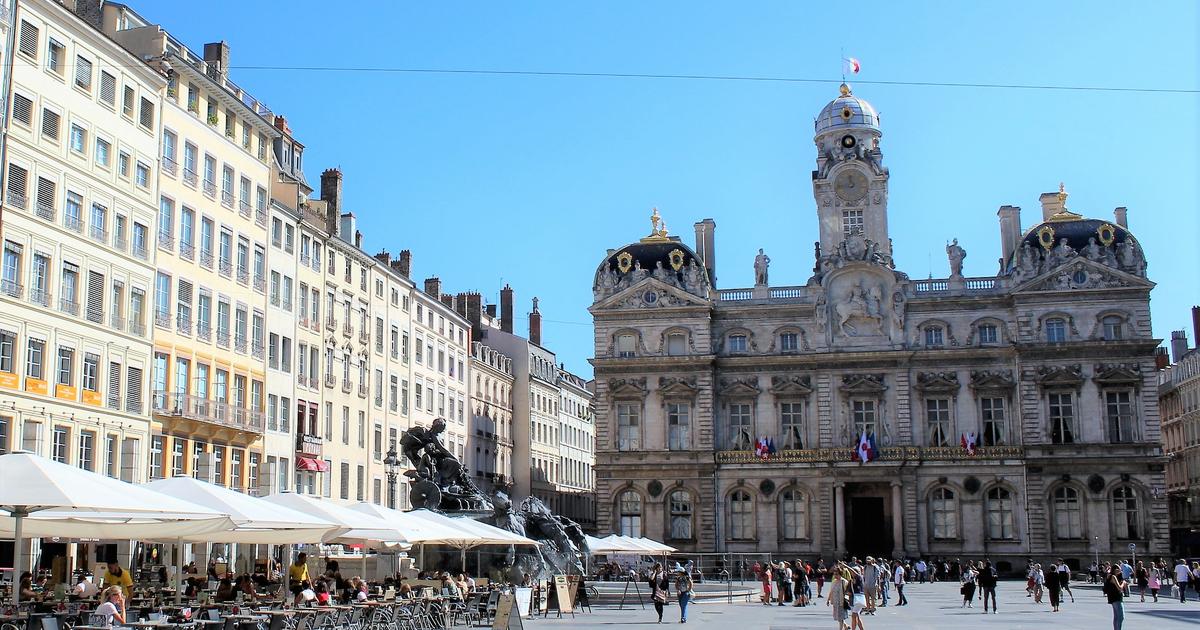Hamburg's Mönckebergstrasse in the run-up to Christmas: fairy lights trace the contours of the bare treetops, the shop windows lure with fir trees and meter-sized illuminated snowflakes. Packed with bags, bags and backpacks, customers flock into the shops and out towards the mulled wine stall at the nearby Christmas market. The crisis looks different.
How does that fit in with the complaints about closed shops, partially empty shopping arcades and extinct inner cities, which internet retail is supposed to be to blame?
The answer is complex.
After many years of strong growth rates, online trade is still growing - last year by nine percent - but more slowly.
The Germans still buy about nine out of ten products in brick-and-mortar stores, according to recent studies by the Handelsverband Deutschland (HDE). The classic retail store still clearly has the upper hand in Germany. But it is also clear that there are two groups of losers:
- Purely stationary retailers, particularly in the fashion, electronics and living sectors, suffer from the so-called "cannibalization" caused by the growing online business and are therefore being supplanted.
- And pure internet retailers hardly grow anymore given Amazon's market dominance.
Digitized stores: the future?
In a well-known electronics store in downtown Hamburg, you can see how stationary retailers want to escape online cannibalization: in the brightly lit aisles, countless customers push themselves between printers, DVDs and flat screens, jam in queues at the cash registers. That will hardly be due to the only lost blinking Christmas tree. Rather at the pre-Christmas time - and in a special area that is directly at the entrance: the pick-up area for goods ordered on the Internet.
Because if you want to fulfill the special Christmas wish for light blue children's headphones, you don't have to wait for tomorrow or the day after tomorrow - as with online shopping. And the picks don't run away either, just to find out in the first department store that the object you're looking for isn't there - and to listen to the second store that the headphones are unfortunately sold out.
Because at some electrical retailers, the stores are now digital: the current range of stores can be viewed online - and contains light blue headphones. With just a few clicks, they are placed in the collection area of this branch, where they can be viewed and paid for - this is called "Click & Reserve".
"More and more retailers combine online and offline business," says Stefan Hertel from HDE. "It is clearly a trend." Whoever does it right grows the fastest, as the HDE monitor shows: These are retailers with "stationary DNA" - traditional shops - and strong online trading, especially in marketplaces such as the Amazon Marketplace. Such as Leder Stoll, for example: in addition to its traditional Frankfurt store, the family company sells suitcases and bags very successfully through its online shop Koffer24.de.
"The best thing to do is combine the business - for example with Click & Collect," says Hertel. So: choose online, pick up at the store.
Online trading is worthwhile - but only for the big chains
A large shoe retailer does the same: Four different pairs of lambskin slippers can be ordered online at the store, reserved for five days. Although the page does not show whether the shoes are in the store, the pick-up confirmation is sent by email after one and a half hours - and the four boxes are ready at the checkout.
The networking of online and offline business runs in both directions: Customers can also return goods ordered online in the shops - "Multi-Channeling" is called in German.
Is this the solution to the vacancy in the store row? "The interlinking of brick-and-mortar and online trade is certainly an advantage. But it is only really worthwhile for the large chains in large cities," says Thomas Roeb, trade expert from the Bonn-Rhein-Sieg University of Applied Sciences. Because digitization is expensive. And smaller stores with a limited selection could not keep up with the range or the low prices. "His online shop doesn't save the corner electronics store either," says Roeb.
Online trading as a solution for everything and everyone is a fairytale, says Roeb. "Even in the low-cost segment, for example in fashion, online retail is not worthwhile. Anyone who sells 5-euro T-shirts online earns almost nothing." Packaging and logistics eat up the small margin. Primark seems to have understood that: The Irish cheap fashion chain has no online shop at all. But only sells in large stationary shops with high "area productivity" and lower premiums. The luxury segment, on the other hand, is different: With premium brands with their high prices, online offers cost advantages
It is also the other way round: why Zalando has shops
Zalando also seems to have understood this mechanism. While Germany's largest online fashion retailer is expanding with premium brands such as Versace or Victoria Beckham, he sells his cheapest parts offline. In eight very analog outlets, five more are to follow by 2021.
One of them is located on the fine Bleichenfleet in downtown Hamburg. A light yellow raincoat, a rust red teddy jacket and a blue down anorak hang here side by side - only once and in one size. Sorting is not based on style or collection, but on gender, type and size of clothing, as in a thrift store. Because there are all remaining items: single sizes, dresses from the previous season or with a missing button. Nobody knows exactly which parts hang on the stands - not even Zalando: When a shelf meter of jackets becomes free, the employees order new goods from the warehouse. Unknown content - there is no analogue.
Carolin Wahnbaeck / DER SPIEGEL
Jackets in the Zalando store: The right target group
Gabriel Voutyras, 16 and Ibrahim Yamba, 17, who are standing on a jeans stand, are also surprising. The two students are on a bargain hunt: "We'll just have a look. The things here are definitely much cheaper than online," says Voutyras. It is precisely this target group that Zalando wants to lure into the outlets, where the up to 70 percent reduced parts can be sold more profitably than online.
The world's number one online retailer, Amazon, also operates stores, but only in America. The Otto Group, the second largest Internet generalist in Germany after Amazon, is also driving networking together with the shopping center operator ECE. Customers can use the so-called "digital mall" on otto.de to check whether a particular jacket is available in one of the approximately 90 shopping centers operated by ECE. There are currently nine partner companies, including Jack Wolfskin and Marc O'Polo, and the trend is rising. In the future, customers should also be able to reserve, pay online or even order from the store to their home.
This also turns the business into an online warehouse and logistics center. Exactly that could ensure survival - at least for chains in a central location.






